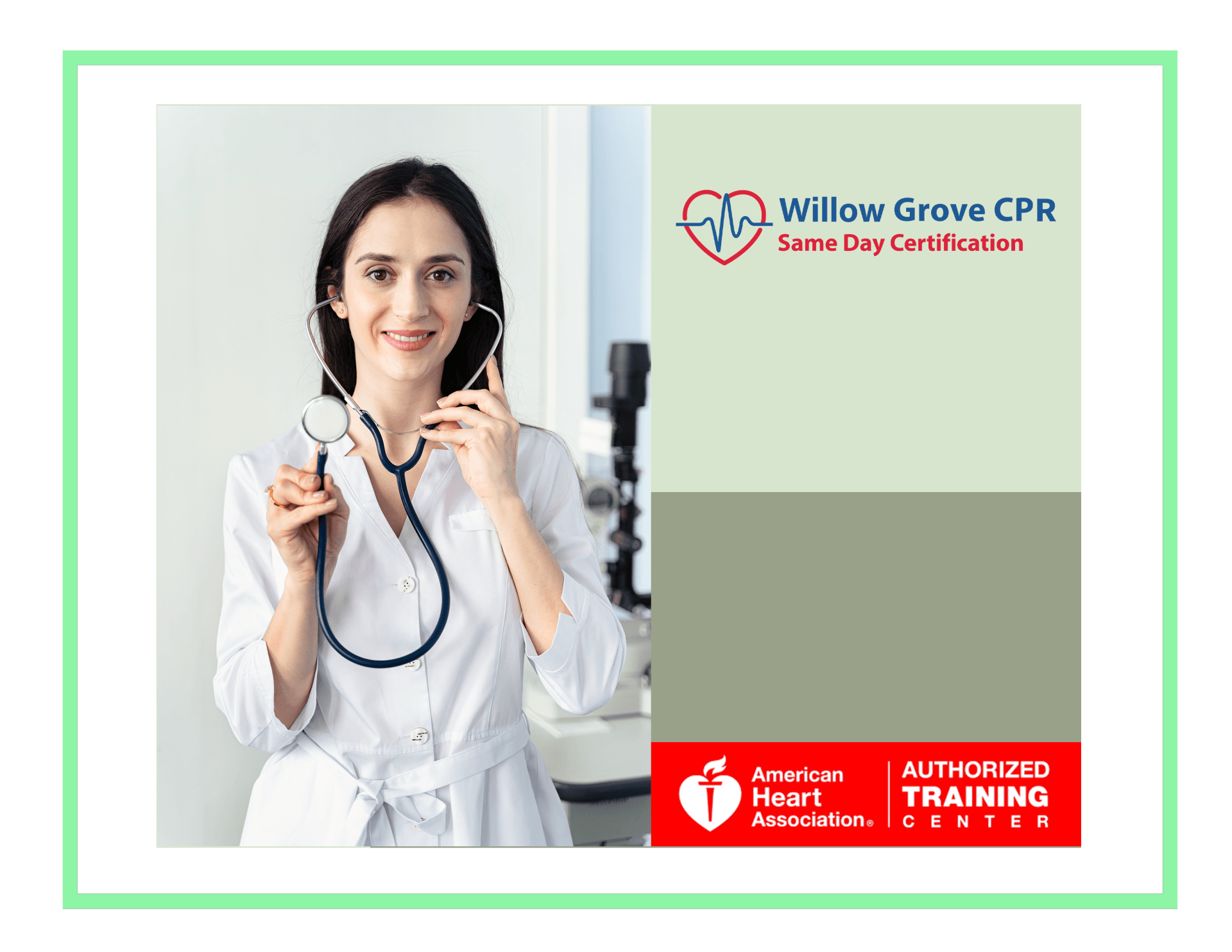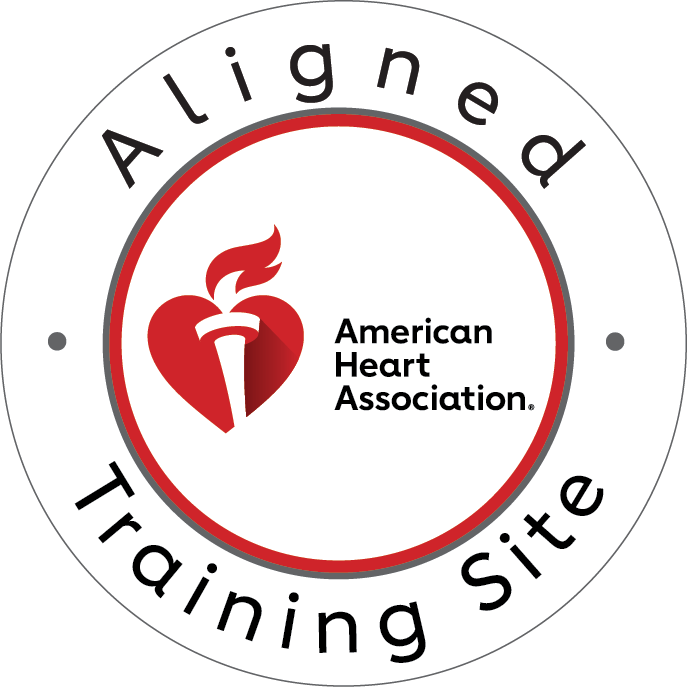Willow Grove CPR is an authorized AHA Training Site and offers in-person ACLS update classes to certify healthcare providers.
This Course provides the knowledge and skills to efficiently and effectively manage cardiac arrest, immediate post-cardiac arrest, acute arrhythmia, stroke and acute coronary syndromes. The ACLS Provider Update Course includes a 2-year provider certification card issued by the American Heart Association upon successful completion of the course.

Section 1: The importance and proper use of a systematic approach to resuscitation
The systematic approach to resuscitation is very important. It is also important when you are taking ACLS provider renewal certification classes.
The systematic approach to ACLS provider renewal certification classes is a vital skill for any healthcare provider who cares for patients at risk of sudden cardiac arrest. This course provides the necessary training and skills required to recognize an emergency situation and respond appropriately before it becomes life-threatening. It teaches you how to recognize cardiac arrest, perform basic life support (CPR), use an AED (automated external defibrillator), provide advanced airway management, administer medications or drugs into the body intravenously through various routes, administer oxygen therapy via noninvasive means such as nasal cannula or face mask as well as invasive means such as endotracheal tube inserted into trachea/bronchi until it reaches level of vocal cords instead outer side of chest wall, so air can flow freely without any resistance during inhalation then exhale slowly out through nose like usual breathing pattern but with some slight pressure applied downward toward ground onto abdomen area between hips since this will help relax diaphragm muscle allowing easier ventilation process without feeling sore throat pain due excessive coughing etc."
Section 2: Airway Management, Respiratory Failure, and Artificial Ventilation
Airway Management, Respiratory Failure, and Artificial Ventilation have a direct impact on the success of CPR and will be taught in this section.
- The importance of airway management
- How to use systematic approach for airway management (i.e., assessment, head tilt-chin lift maneuver, jaw thrust maneuver)
- How to use systematic approach for respiratory failure (i.e., assess respiratory rate and depth)
- How to use artificial ventilation techniques if necessary
Section 3: Acute Coronary Syndromes (ACS)
Acute coronary syndromes (ACS) is a collective term for the most common form of heart attack, unstable angina and non-ST-elevation myocardial infarction (NSTEMI). ACS can be caused by atherosclerosis, a buildup of plaque in arteries that can restrict blood flow to the heart muscle. The resulting lack of oxygen deprives the heart muscle cells of their energy source and causes chest pain or discomfort. ACS may also present without chest discomfort because it involves only the innermost layer of artery walls, which have no pain receptors.
Acute coronary syndrome symptoms include:
- Chest pain or discomfort
- Shortness of breath or difficulty breathing
- Nausea or vomiting
Section 4: Management of acute ischemic chest pain and stroke syndromes
The management of acute ischemic chest pain and stroke syndromes is one of the most challenging tasks for a medical provider. You must recognize and treat these conditions in a timely manner to prevent further deterioration.
ACLS Provider Renewal Certification Classes provide you with the opportunity to refresh your skills on this topic with an experienced ACLS instructor. This course will also provide you with valuable information on how to manage cardiac arrest during pregnancy, pediatric patients, and elderly patients as well as how to handle difficult airway situations.
Section 5: Review of ACLS algorithms
The American Heart Association (AHA) algorithms are a set of steps that you follow in order to treat a patient. By following the algorithms, you can be sure that you are doing everything right and not missing anything important.
Algorithms help guide your treatment decisions based on the type of cardiac arrest victim you have in front of you. The AHA created its algorithm to provide an easy way for providers to remember what steps to take during resuscitation attempts by putting them in their own order according to symptoms.
Section 6: Recognition and early management of peri-arrest conditions such as symptomatic bradycardia and tachycardia.
- Recognition and early management of peri-arrest conditions such as symptomatic bradycardia and tachycardia.
- Bradycardia with pulse (asystole): In this situation, the patient is bradycardic (less than 60 beats per minute) but has a palpable pulse or an electrocardiogram that shows a heart rate greater than 40 beats per minute.
- Tachycardia with pulse: In this situation, the patient has sustained ventricular tachycardia at rates between 100 to 150 beats per minute or supraventricular tachydysrhythmias at rates greater than 150 beats per minute and evidence of cardiac output (pulse >100 bpm).
Section 7: Recognition and Early Management of Cardiac Arrest
Recognition and Early Management of Cardiac Arrest
This course will provide you with information on how to recognize cardiac arrest and early management of the condition. In addition, this course will also offer CPR training.
Section 8: Immediate Post Cardiac Arrest Care
In the American Heart Association Post Cardiac Arrest Care Section within the ACLS course you will learn that there is increasing recognition that systematic post–cardiac arrest care after return of spontaneous circulation (ROSC) can improve the likelihood of patient survival with good quality of life. Following the initial stabilization of the patient, subsequent objectives of postcardiac arrest care are to:
Initiate cooling of the body to optimize survival and neurological recovery
Identify and treat acute coronary syndromes (ACS)
Optimize mechanical ventilation to minimize lung injury
Reduce the risk of multiorgan injury and support organ function if required
Objectively assess prognosis for recovery
Assist survivors with rehabilitation services when required
The ACLS Provider Update Course includes a 2-year provider certification card issued by the American Heart Association upon successful completion of the course.
The ACLS Provider Update Course includes a 2-year provider certification card issued by American Heart Association upon successful completion of the course. This class is designed to teach healthcare providers the knowledge and skills to efficiently and effectively manage cardiac arrest, immediate post-cardiac arrest, acute arrhythmia, stroke and acute coronary syndromes.
Upon completion of this course you will be able to:
- Demonstrate how to perform effective CPR on a child or infant
- Describe the pathophysiology of heart disease in children and adults that may lead to cardiac arrest or other life threatening conditions
- Identify essential first responder interventions for managing respiratory emergencies in pediatric patients
Conclusion
We look forward to helping you expand your knowledge base and be a better healthcare provider.
Willow Grove CPR offers ACLS & BLS renewal courses in the Philadelphia region to keep you certified. All certification cards are issued by the American Heart Association immediatly after your course. Your new certification card will be valid for two years.To view our schedule and book your ACLS Renewal Course near Philadelphial


American Heart Association Certified Training Provider
2735 Terwood Rd. Unit H, Willow Grove, PA


